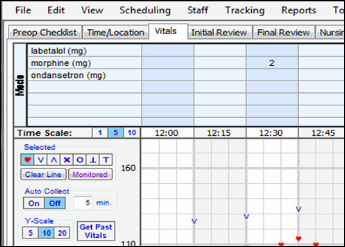Merry Christmas and a Happy New Year to the HIStalk crowd. I wish you the joys of the season!
News 5/27/2009
From Lazlo Hollyfeld: “Re: regional health IT extension centers. They are being passed of as a critical component to assist 1-3 physician practices with EMR issues. Is it just me or does anyone else think that they are going to be a complete boondoogle? I recently heard a prominent official compare their design/purpose to QIOs. If this is the case, ONCHIT is largely going to piss away at least $700M over the next few years with very spotty results.”
From The PACS Designer: “Re: ICU LifeGuard. Baptist Hospital of South Florida has installed an intensive care solution called ICU Lifeguard that can detect subtle changes in a patient’s condition. The system permits 24-hour-a-day monitoring of patients undergoing intensive care at a central work area to improve the chances for intervention should alarms be activated during times when direct care is not present.” Link. I think that’s just their name for Visicu’s eICU.
American Sentinel University, an accredited (DETC) online school, will give incoming students in three Master’s programs up to 18 hours of credit for Cerner Millennium coursework.
The board of Grady Memorial Hospital (GA) will choose a vendor for its $40 million infrastructure upgrade on Wednesday.
A couple of folks have sent articles or comments that have run elsewhere (their own blogs or someone else’s) with the expectation that I will use them. Unlike other blogs, I use only original material. Reader submissions are encouraged if they haven’t appeared anywhere else.
The CMIO of Wheeling Hospital will present a Medicity-sponsored Webinar on June 18 called “Enhancing clinical effectiveness and efficiency through patient-centered care collaboration”. If I have some time this weekend, I’ll be rolling out a new HIStalk events calendar to make it easier to find programs like this.
Intellect Resources will offer a free HIT career search workshop in NYC on June 3.
Cerner will add 40 tech support jobs in Dublin, Ireland by the end of the year.
Kaiser Permanente uses HealthConnect to gather data for a study that found 11% of its patients got whooping cough because their parents didn’t get them immunized. Their chances of getting the infection are 23 times that of children who got all their shots.
Forbes interviews Denni McColm, CIO of Citizens Memorial Hospital of Bolivar, MO. This quote is about the technology being used to monitor patients at home: “We’ve also seen some decline in our admission rates for home health patients. They take vital signs, weight and blood pressure every day, and it’s automatically fed into our system … it’s submitted to electronic medical records through phone lines. It can also remind them to take their medication. They get a reminder to step on the scale, take their blood pressure and put this on your finger. And sometime in the next hour, when their phone isn’t busy, it dials in the information. The sky’s the limit about how much care can be provided at home. One nurse can sit in a room and monitor 40 patients and be alerted to any anomalies, which you can’t do if you have to go through their home or see them one at a time.”
Lee Memorial Health System (FL) gets board approval to spend $68 million to roll out its EMR system (Epic, I believe) to its four hospitals and all employed physicians, although it’s hoping to offset that cost with up to $40 million in ARRA money.
A great answer for hospital overutilization: encourage people to die somewhere else.
A CBS News piece covers electronic health records in the ED at Inova Fair Oaks Hospital (VA), covering (but not by name) Picis ED PulseCheck. Tidbits: Inova spent $200 million over 10 years for its IT solutions. A doctor in a three-doc practice had an interesting comment about ambulatory EMRs: “I’m not doing unless I get a benefit from it, right? Is it going to make me any faster? No. Is it going to make my patient care any better? I don’t see that.”
3M Canada donates patient coding software to the HIM program of a Canadian college.
Patient check-in software vendor Phreesia gets a writeup in a New Brunswick business journal, mostly because it’s doubling its employees in Canada to 100 in addition to 49 in New York.
Natural language processing coding and billing systems vendor A-Life Medical buys out UPMC’s interest in its inpatient coding solution, setting up a new management team.
Three-employee Acuitec, a Birmingham, AL-based joint venture between a local entrepreneur and Vanderbilt University, is marketing a Vanderbilt-developed periop system.
HERtalk by Inga
Retail clinics in grocery stores and retail chain stores are more likely to be located in areas with a lower population of black residents, lower poverty rates, and higher median incomes. In other words, poorer neighborhoods are less likely to have access to one of the country’s 1,000 or so retail clinics.
NHS patients concerned with privacy risks will now be allowed to delete the electronic summaries of their treatment records from the national database.
Epic earns top honors in a new KLAS report highlighting pharmacy information systems and integration. Epic scored high for its tight integration between EpicRx and its other EHR functions, as well as for customer service and support. Siemens Pharmacy and GE Centricity Pharmacy were the second- and third-ranked products. The report also noted an increased demand for integration between core clinical systems and pharmacy software. The tighter the integration, the bigger the impact to patient safety and the increased likelihood of physician adoption and satisfaction.
The New York Times explores some of the more less conventional ways hospitals are trying to connect with the public to attract patients, donors, and doctors. Twittering from operating rooms, posting surgeries on YouTube, and patient blogging are some of the ways hospitals are trying to stand out among competitors. Remember the good old days when doctors didn’t advertise? Now you have brain surgery on the Web and baseball stadiums named after your local healthcare system.
The former head of a closed Detroit hospital agrees to pay $350,000 for violating state public health code and privacy laws after medical records were found burning on his farm. Dr. Soon K. Kim must also hire a contractor to dispose of any remaining records. Assuming the burning did the trick, the settlement amount sounds a little excessive. But, what do I know?
Mt. Washington Pediatric Hospital (MD) selects PerfecTIME time and attendance software to automate the workforce management process for its 600 employees.
IT employment continues to drop from its 4.058 million peak in November. By the end of April, only 3.87 million workers were employed in IT. Don’t expect things to turn around until at least the end of the year.
AT&T is partnering with device monitoring companies and other high-tech firms to advance telehealth applications.
HHS Secretary Kathleen Sebelius and Attorney General Eric Holder announce the creation of the Health Care Fraud Prevention and Enforcement Action Team (HEAT). The HEAT team will focus on investigating Medicare fraud, including investing in new technology for fraud detection.
Seattle Radiologists deploys Corepoint Integration Engine to monitor its IT environment and enhance its radiology workflow and application environment.
Why do we women have to suffer so much for fashion? Experts are now finding that women who wear too tight jeans run the risk of suffering a nerve problem called meralgia paresthetica. Seriously, what man would possibly look our way if we were wearing jeans that look like maternity pants from the 1980s?






“Retail clinics in grocery stores and retail chain stores are more likely to be located in areas with … higher median incomes.” (and from the article:)”Tine Hansen-Turton, executive director of the Convenient Care Association, an industry group that represents retail clinics, said the clinics were not devised to be part of the health care safety net.”
I hope it didn’t take too long to figure this one out. To the authors’ credit, they got at the heart of the issue. At least that director is upfront about their goal, and it isn’t “helping busy doctors reduce their case loads”. Or maybe it is, if you’ve got cash.
“But she added “there is a very real possibility” that clinics might expand to more populations and forge partnerships with state and local governments to treat more underserved patients.””
There’s also a similar possibility of Santa Claus paying a mid-summer visit to my house to deliver a check from Wall Street as an apology for wiping out so much of my retirement savings. Lost in the discussion of “revolutionary changes in health care” is realization that many docs, especially primary care, are carrying quite a bit of the load that society feels should fall on someone’s shoulders. Part of the unwritten agreement, at least in years past, was that insurance + government payments (cough), especially for easy cases, would help provide for the uninsured portion of a practice. Once we start agitating for new changes (and subtly mocking “old fashioned” practices), society better realize that the unprofitable segments of care will get dropped pretty darn quickly.
Mr. H is sharp! ICU Guard at Baptist Health of South Florida is the Visicu eICU but wanted HIStalkers to focus on the solution in a hospital environment rather than on the vendor.
Regarding Phreesia:
BlueCross/Blue Shield Venture Capital venture at work.
http://ducknetweb.blogspot.com/2009/05/blue-cross-venture-capital-investment.html
GE Centricity #3 for integration? Typo maybe? You meant interfaced? It is still the standalone BDM system they bought a few years ago. Maybe the competition was PowerPoint based.
Dr. T – I wasn’t very clear on the KLAS report and pharmacy information systems. Siemens Pharmacy ranked second for its overall product, followed by GE Centricity Pharmacy. Cerner, Eclipsys, McKesson, Meditech, and Mediware were also profiled.
Don’t be too hasty to discount the HIT Extension Center concept. If ONC follows the successful Land Grant/Sea Grant extension model, we ought to see some good results. It’s all in the execution.
“Retail clinics in grocery stores and retail chain stores are more likely to be located in areas with … higher median incomes.”
That’s probably because the retail clinics, like retail stores, expect to actually be paid. No point setting up shop where people can’t afford you. Damn captialists…
Dr T – I am guessing that it is not the old BDM product, but instead the pharmacy system that they acquired from IDX that they’re talking about in the report. The BDM product doesn’t really integrate to anything other than Eclipsys. Their marketing is horribly confusing, though, as they sell both under the Centricity name right now. Can’t wait until they develop a coherent strategy for their pharmacy systems.
“Retail clinics in grocery stores and retail chain stores are more likely to be located in areas with a lower population of black residents, lower poverty rates, and higher median incomes. In other words, poorer neighborhoods are less likely to have access to one of the country’s 1,000 or so retail clinics.”
How can a business earn if it set up shop in places where people won’t be able to afford them – unless of course they were subsidized by the government so that they can sell products at a lower price convenient for a poorer demography.
Shockingly Grady chose Epic to be their full clinical IT vendor…with only $40M to spend.
http://www.bizjournals.com/atlanta/stories/2009/05/25/daily41.html
Not sure if Grady executives keep up with industry news, but even though Epic said it would take less than $40M to install…in the end I wouldn’t be surprised like 95% of all other Epic installs (especially at Grady with their recent track record) it running double & they miss the go-live date. This isn’t to say that the other choices were better for Grady…but for an EXTREMELY cash strapped public hospital, a partnership with Emory for their physicians (huge Cerner client) and being in the backyard for both Eclipsys and McKesson (who they use for Pharm distribution)…the other choices were MUCH smarter $$$ decisions in the long run with better IT outsourcing track record.
Retail clinics in grocery stores and retail chain stores are more likely to be located in areas with a lower population of black residents, lower poverty rates, and higher median incomes. In other words, poorer neighborhoods are less likely to have access to one of the country’s 1,000 or so retail clinics.
Or maybe its just as easy as “Let’s not set up a working pharmacy with all of our controlled substances exposed on a nightly basis in an area that is prone to crime.” Without the bricks and morter and the retail traffic to bring in new customers – the stand alone clinic doesn’t have the space to lease and the business model falls apart.
Something is definitely going on w/ Medfusion and Medem. From what I understand, Medfusion is acquiring Medem. I don’t know if Allscripts/Misys will gobble up that entity, but Allscripts had a strategic partnership w/ Medem and Misys with Medfusion. There are a number of former A4 and Misys employees at Medfusion as well.
There are also some rumors about Misys taking even more control of the management team in the new entity with Vern Davenport taking over for GT. Interesting times over there.